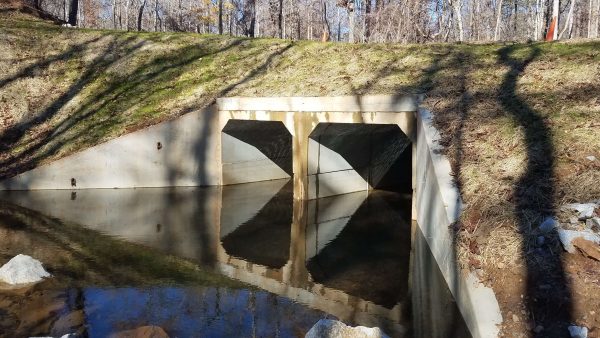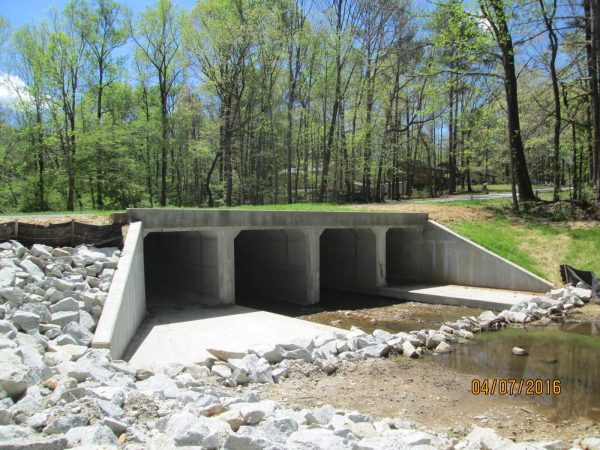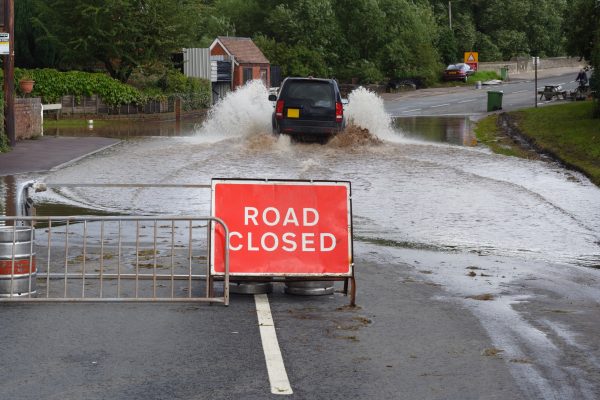
Stormwater
Increased development can result in flooding and dangerous conditions, especially around roadways. Stormwater runoff also carries pollutants found on the ground and other surfaces to streams, ponds, lakes, and rivers. This potentially contaminated runoff can cause long-lasting adverse effects on trees, plants, animals, and marine life.
Stormwater management is an evolving responsibility for local governments and authorities. Requirements include everything from program development to new permit demands. Aging pipes and increased development require replacement of the old/or undersized stormwater infrastructure. These projects are considered capital improvement projects. While this is not a simple task, Rindt-McDuff Associates can help you through each step of the way.

RMA Comprehensive Solutions
Rindt-McDuff Associates are the experts in helping communities economically restore aging stormwater infrastructure. Our engineers and environmental specialists work together to ensure a holistic approach to stormwater programs and compliance regulations. RMA provides both stormwater program support and capital improvement projects (planning, design, and construction).
We can also assist local governments in securing funding for large-scale capital projects to replace failing infrastructure and reduce flood hazards.
Culverts & Stormwater Conveyance Systems
Stormwater management is a critical factor in safeguarding the public and private economic investments. Undersized or failing culvert systems can lead to significant flooding, roadway failure, and other damaging impacts. These issues require an exceptional understanding of materials, maintenance, aesthetics, hydraulic conditions, and many other factors.
RMA can make the process of rehabilitating your current system or addressing drainage problem areas much more manageable. Given the project’s scope, we perform a hydrologic analysis to confirm design details such as location and culvert size. Upon completion, we go a step further and prepare construction documents for bidding and construction purposes.

Permit Compliance
Stormwater runoff is generated from precipitation and all forms of water, such as ice and snow. Runoff occurs over both undisturbed land and developed areas. Impervious surfaces like rooftops, driveways, parking lots, and road surfaces increase water flow to lower elevations.
During moderate to heavy rain events, stormwater carries pollutants like chemicals, oils, dirt/sediment, and trash into our waterways like rivers, streams, lakes, and coastal waters. The National Pollutant Discharge Elimination System (NPDES) has implemented ubiquitous regulations to govern stormwater and mitigate runoff impact. These regulations affect many different types of activities such as stormwater from municipalities, commercial properties, developments, and industrial sites. There are individual permits and general permits and there are construction stormwater permits.
Who Needs a Stormwater Permit?
NPDES defines limits by the types and volumes of pollutants discharged into the United States’ waterways. Depending on the permit, there are usually inspection, sampling and laboratory analysis requirements. Municipal stormwater permits require a plan that covers management of all the potential pollutants within the entire watershed. Industrial stormwater general permits require a management plan that covers all potential pollutants at the site exposed to stormwater. Either type of stormwater management plan can be complex. RMA has extensive experience with all of above-mentioned permits and can manage the entire process for the applicant.
Hydrologic & Hydraulic Modeling
Hydrologic analyses anticipate the volume of stormwater runoff. Hydraulic calculations deal with the physical properties of water, such as concentration, depth of flow in a channel or pipe, and subsequent flow into downstream drainage systems. The calculations can also predict the velocity, quantity, and flow characteristics through a conveyance system (pipe or channel).
RMA uses various modeling and software programs to determine the correct flow rates and ideal culvert or system size. We use Rational, SCS, HEC-HMS, and other models and software based on the work to be performed. Our expertise in this area provides a wide range of hydrologic and hydraulic modeling solutions for water supply, stormwater, and wastewater systems.
RMA engineers document the design basis to prepare for projects or emergencies. Documentation includes asset performance, evaluation, planning, and budgeting. We also perform technical analysis with report documentation for basin sizes, flow rates, flow characteristics, and pipe or culvert sizing. All of this information can help improve the understanding and management of water resources within a community.
Stormwater Flood Studies & Mapping
Significant rainfall events and continuous precipitation can often cause flood conditions that stretch beyond the capacity limits of a drainage system. Developing a remedy for these flood events will usually require a holistic approach. Many factors help determine solutions, such as upstream and downstream conditions and other elements in the drainage basin. Those factors include land use, soil types, and slopes. In addition, floodwater mitigation helps manage stormwater runoff from the surface. Modeling software can simulate natural processes and achieve better outcomes with final design solutions.
RMA engineers have extensive experience in hydrologic and hydraulic modeling. We can complete flood studies and mapping projects when there is a change of conditions in a FEMA-studied area. Also, related to “changed conditions,” RMA is capable of making FEMA floodplain map revisions. We also have experience preparing “Letter of Map Revisions” (LOMR), which is often required to modify conditions on capital improvement projects for current FEMA flood insurance rate maps (FIRM).

What’s Next?
If you have a stormwater project, click the button below to get connected with one of our seasoned engineers.
